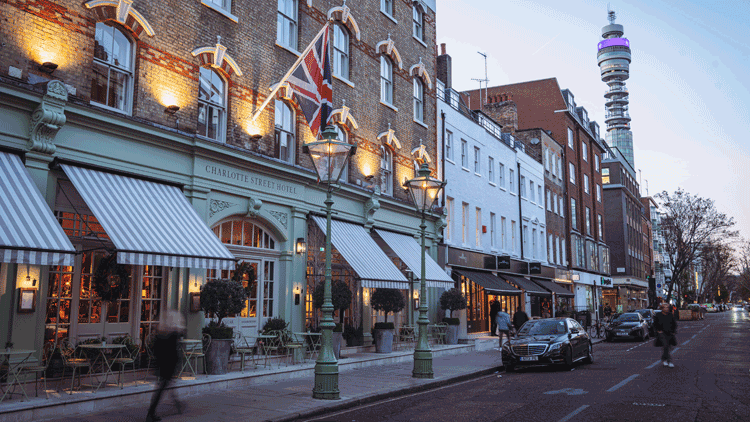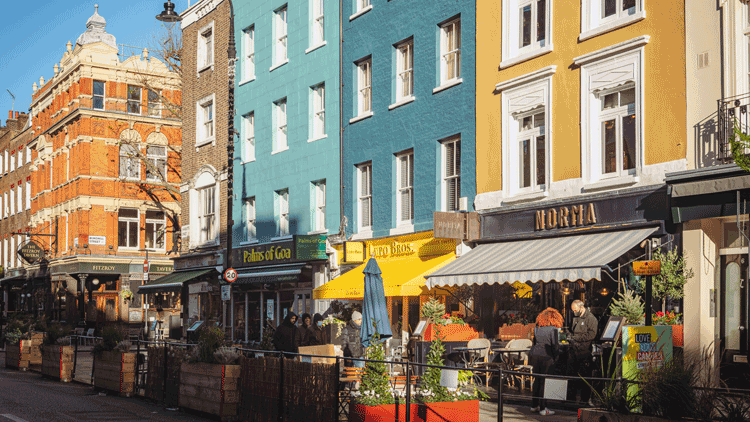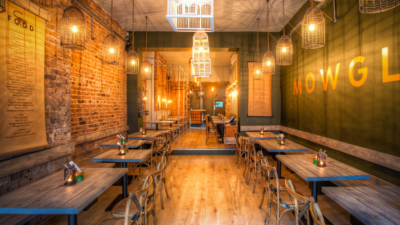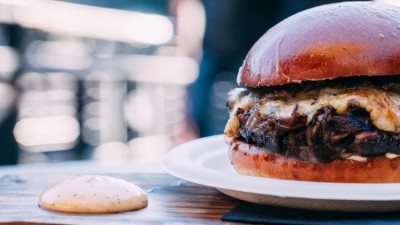Independent thinking: how Charlotte Street is returning to its former glory

As Tottenham Court Road was once known for its back-to-back independent electrical retailers, nearby Charlotte Street had a reputation for its vibrant independent restaurant scene, home to Pied à Terre, no less, one of the longest standing independent Michelin starred restaurants not just in London but the UK. Over the past few years, however, it has attracted a growing number of large, branded restaurant groups and, at the start of last year, was impacted heavily by the Coronavirus lockdowns, with the complete tail off of footfall resulting in a number of restaurant closures. Now, as the capital continues its recovery, the street could make a return to its former glory days with new fine dining restaurants including Six by Nico and Carousel now in situ and Nuno Mendes’ Lisboeta heading there in the spring.
What is it about Charlotte Street that made it a popular choice for independent restaurants?
In a similar way to Chinatown there was an influx of people from overseas, with Mediterranean and Greek restaurants that clustered together. It is a very elegant Georgian street that suits restaurants, and it was a big residential area which also had something to do with it. It is still incredibly accessible – it’s a stone’s throw from Soho and is an elegant extension of Soho if you like. With these factors and its proximity to Oxford Circus, Tottenham Court Road and Goodge Street tube stations it lends itself to becoming a restaurant destination. And it doesn’t suit retail; if you want that you go to Oxford Street or Tottenham Court Road, so it makes sense that it has evolved as a restaurant destination.
What happened to Charlotte Street during the lockdowns?
Like the rest of the West End, Charlotte Street was hit very hard during the lockdowns. There are some very large office occupiers in the area, such as Facebook and Estee Lauder, and while there is a reasonably big residential population there are a lot of students as well, which all had an impact. A number of restaurants closed as a result of Covid, but when you look at the ones that did it tended to me in the branded sector rather than the independents s and fine dining operators that perhaps Charlotte Street has been known for historically.
Which restaurants closed?
If you look at what didn’t survive there is a clear pattern – Wahaca, PizzaExpress, Cote, and Zizzi all closed. It was very much the branded sector affected by CVAs and so on. We see that as an opportunity for Charlotte Street as something of a clearing out. They are all great sites in a prime stretch on Charlotte Street and we are now seeing opportunities for some of the more entrepreneurial, founder-led operations to take sites that would not have been available to them even two years ago.
And what has come in?
The Wahaca site is big (9,000sq ft) but it’s a phenomenal location and is where Carousel has gone. The hybrid concept that they have there, not just with the rotating guest chef restaurant, but their own restaurant and wine bar and event space is tailor made for that site. For me that’s a key letting and a key turning point for the street. Mowgli has taken the former Cote site and I have huge admiration for Nisha [Katona, founder] and Where The Pancakes Are is in the former PizzaExpress (other recent entrants include Scottish chef Nico Simeone’s Six by Nico, which took the former Zizzi site, and Norma). There are some really nice stories that have come out of what was a tough time for Charlotte Street. It has created an opportunity for it to rejuvenate itself and almost go back to what it was known for, its strong restaurant offers.
When did Charlotte Street’s reputation as an interesting restaurant hub start to wane?
There is no exact time, but it was certainly when those large, branded operators tipped the balance. One of the reasons why that happened is the guardianship of Charlotte Street is still quite fragmented. Shaftesbury owns a cluster of properties in the area, but we don’t have the critical mass we do in Carnaby or Seven Dials and when you’ve got that fragmented ownership individual landlords will take a different view on what they believe to be covenant strength and so on. For obvious reasons they won’t curate in the way that we like to and pick operators that appeal to a destination as a whole.
So, what next for the street?
Landlords are now seeing that when you pick an operator on what is perceived to be covenant strength the past year has proved that that is not always the case. The strength is in the location. If you are able to identify strong operators that take a long-term view to a site and location as opposed to growing an empire you are on much better ground. For Charlotte Street going forward we will hopefully see more riskier decisions being made in terms of the restaurant mix to create something quite special. When you look back at the history of Charlotte Street it was all about one-offs and independents and it would be wonderful to see that history continue in a modern version.
Julia Wilkinson is restaurant director at Shaftesbury.




















